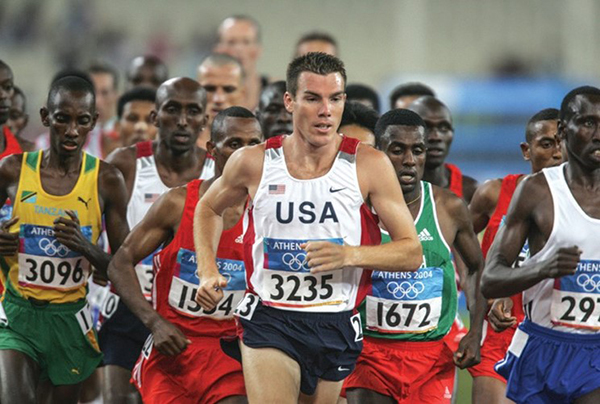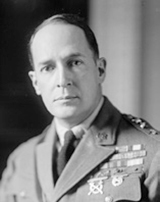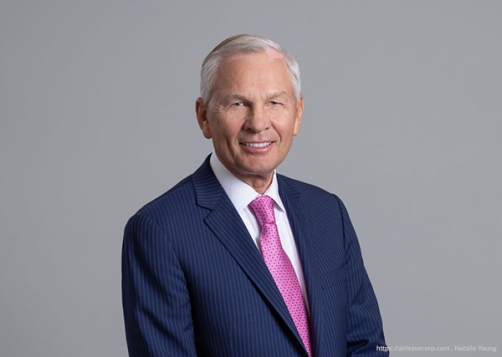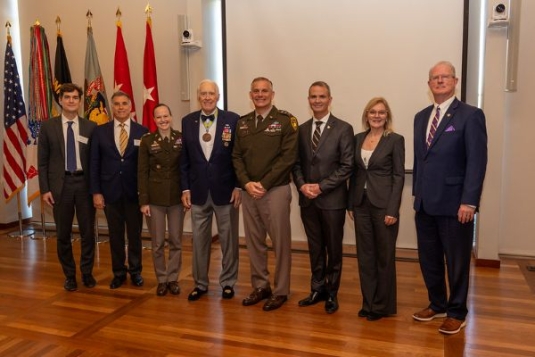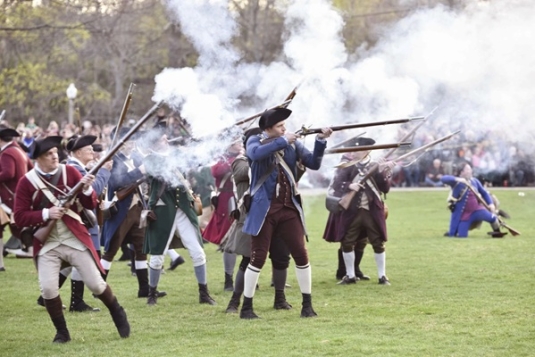West Pointers Make an Impact on the Olympics
By Keith J. Hamel, WPAOG staff
Every living graduate is familiar with General Douglas MacArthur’s famous dictum: “Every cadet an athlete.” MacArthur, Class of 1903, introduced this philosophy when he became West Point Superintendent in 1919, realizing the importance of physical fitness and intramural athletic programs in the wake of the modern warfare he witnessed in World War I. The battlefields of France during the Great War also led MacArthur to devise his well known “Upon the fields of friendly strife” inscription for the old West Point gymnasium. In a 1939 letter, he explained the origin of this inscription by saying, “The training of the athletic field which produces in a superlative degree the attributes of fortitude, self-control, resolution, courage, mental agility, and, of course, physical development, is one completely fundamental to efficient soldiery.” In simpler terms, good athletes make good soldiers. Employing the symmetric property of mathematics, good soldiers then should make good athletes. West Pointers’ participation in Olympic games—approximately 100 West Pointers (89 athletes and numerous supporting players) over the course of 25 Olympiads—proves this logic.
Athletes and Officers
West Pointers first participated in the Olympics in 1912. In that year, six graduates traveled to Stockholm, Sweden to take part in the games of the V Olympiad. Two of the six—Guy V. Henry Jr., Class of 1898, and George S. Patton Jr., Class of 1909—went on to wear general stars; another, John C. Montgomery, Class of 1903, was accorded the only battlefield promotion made by General John J. Pershing, Class of 1886, during World War I and also earned a Distinguished Service Medal during the war; and another, Harold M. Rayner, Class of 1912, later became the Master of the Sword at the Academy. Good soldiers, obviously, but they were also good athletes. Henry, Montgomery, and Ephraim F. Graham, Class of 1903, earned a bronze medal in the Equestrian Three-Day Team event. Montgomery also won a bronze medal as a member of the U.S. Polo Team at the 1920 Summer Games in Antwerp, Belgium. Rayner also participated in Antwerp, earning a team bronze medal in Fencing (Foil). Scott D. Breckinridge, the sixth West Pointer to participate in Stockholm in 1912, was an ex-cadet from the Class of 1904, and he barely missed winning an individual medal, coming in fourth in Fencing (Foil).
The legacy of the Long Gray Line in the Olympics continued in 1920 at the Summer Games in Antwerp (the games were not held in 1916 due to World War I). Sixteen West Pointers, the most ever for one Olympiad, competed in Antwerp, including Joseph A. Cranston (Boxing) and Henry I. Szymanski (Wrestling), who had just graduated from the Academy a year earlier. As with the 1912 Stockholm Games, the 1920 Olympics in Antwerp showcased some stellar West Point athletes who went on to have distinguished military careers. The U.S. Polo Team, for example, which won the bronze medal, featured Terry de la Mesa Allen, an ex-cadet from the Class of 1911 who commanded the 1st Infantry Division in North Africa and in the invasion of Sicily during World War II, earned the Distinguished Service Cross, and later retired at the rank of major general; and Arthur Harris, Class of 1914, who commanded the 1st Army (1941-43) and retired at the rank of brigadier general (the team also featured Montgomery, who had won a bronze medal in the 1912 Equestrian Three-Day Team event, and whose military accomplishments are noted above). Three West Pointers also won bronze as members of the U.S. Fencing Team in the Foil event: Rayner (who had also competed in 1912); Francis W. Honeycutt, Class of 1904, who ultimately commanded the reactivated 9th Infantry Division as well as Fort Bragg, North Carolina, and retired at the rank of brigadier general; and Robert Sears, Class of 1909, who commanded the 35th Infantry Division in World War II as a 60-year-old colonel, the oldest combat soldier in the European theatre.
West Point Olympians’ “Triumvirate”: Equestrian, Fencing, Modern Pentathlon
Sears also competed in the Modern Pentathlon at the 1920 Antwerp Olympics, and by the time of the 1924 Summer Games in Paris, France, there were three events for which West Point graduates had become known for at the Olympics: Equestrian, Fencing, and Modern Pentathlon. This should not be surprising. Cadets were trained in the horsemanship skills needed for equestrian competitions until 1947 (often in the approximately 150-foot by 600-foot indoor Riding Hall that was converted into an academic building starting in 1946 and renamed Thayer Hall in 1958). Instruction in the use of swords was a necessity for future military officers in the first quarter of the twentieth century, and fencing remained a central part of West Point’s physical education program for decades after. Finally, the Academy is the ideal pitch to perfect the soldier skills necessary for modern pentathlon events, particularly shooting and long- distance endurance. In fact, even though he was not a member of the Modern Pentathlon Team at the 1924 Paris Games, Sidney R. Hinds, Class of 1920, found success demonstrating the shooting skills that he learned at West Point, winning a team gold medal for the Free Rifle (400, 600, and 800 meters) event.
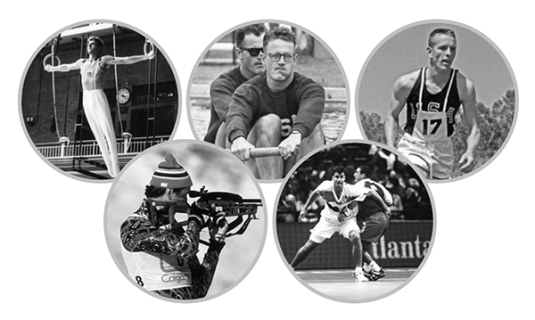
After Hinds’ gold medal in Free Rifle, no West Point graduate would win a medal in any event outside of Equestrian, Fencing, and Modern Pentathlon until Laurence J. Palmer, Class of 1959, who won team gold in the 1960 Winter Games in Squaw Valley, California as a member of the U.S. Ice Hockey Team. More West Point Olympians (28) have competed in Equestrian than any other event, winning a total of 17 medals. Without a doubt, the most successful West Pointer in the event was Earl F. Thompson, Class of 1922, who won five medals (two golds, three silvers) over the course of three Olympics (Los Angeles-1932, Berlin-1936, and London-1948). Other notable West Point Olympic equestrians include Harry D. Chamberlin, Class of 1910, who won a team gold for the Three-Day event and two individual silver medals for the Jumping event in 1932 (and who also gained notoriety for the “Chamberlin seat” now dominating hunting and jumping sports); Edwin Y. Argo, an ex-cadet from the Class of 1918 June, who won a team gold medal with Chamberlin in 1932; and Frank S. Henry ’33, who won a gold medal for the Three-Day Team event and two individual silver medals, one for Dressage and one for the Three-Day Individual event, in 1948.
Modern Pentathlon follows Equestrian as the Olympic event with the most West Point Olympians who have participated (23). Richard W. Mayo ’28 was the first American to medal in Modern Pentathlon, winning bronze at the 1932 Summer Olympics in Los Angeles. Just months after graduating from West Point, where he had been captain of the Fencing Team, he also competed in both Modern Pentathlon and Fencing at the 1928 Games in Amsterdam, Netherlands. Mayo commanded the 15th Army in France and Germany during World War II and retired as a brigadier general. Another future general who found success competing in Modern Pentathlon is Charles F. Leonard ’35. En route to winning the silver medal at the 1936 Games in Berlin, Leonard shot a perfect 200 during the Modern Pentathlon’s difficult pistol course, the only time such a feat has ever occurred in international competition. Had there been a Modern Pentathlon Team event in 1936, Leonard, along with other U.S. competitors Fredrick R. Weber ’30 and Alfred Starbird ’33, would have won gold. Similarly, at the 1948 Games in London, George B. Moore ’41, Richard L. Gruenther ’46, and Hale Baugh ’46 would have won a bronze medal had there been a Modern Pentathlon Team event. Moore, who earned a Purple Heart, two Bronze Star Medals, and the Legion of Merit on the battlefields of World War II, added an individual silver medal to his collection for his Modern Pentathlon finish in 1948. Gruenther and Baugh’s classmate, Guy K. Troy ’46, had the distinction of leading the first U.S. Modern Pentathlon Team at the 1952 Games in Helsinki, Finland, but before turning a new, modern era for the Olympians, there is one more event of the West Point Olympians’ triumvirate to highlight.
While only one West Point Olympian has won a medal in Fencing since 1924, eleven graduates have competed in the event. Perhaps the greatest of West Point’s fencers was Gustave M. Heiss ’31, who won a team bronze medal in Épée at the 1932 Summer Games in Los Angeles. After the Olympics, Rene Pinchart, the famous Belgian master and U.S. Fencing Team coach, stated unequivocally that if Heiss had had two years of seasoning in Europe he would have become the first and only American world épée champion. Heiss, a member of seven national championship teams, won six fencing titles before he was wounded by a German booby trap during the Battle of Bulge in World War II. Another of West Point’s greatest all-time fencers was Thomas J. Sands ’29, who was U.S. champion in épée in 1935 and 1937 and competed in that weapon at the 1936 Berlin Olympics, coming in fifth. Later, Sands was chief of staff of the Eighth Army, commanding general of the Seventh Infantry Division, and deputy commandant of the Armed Forces Staff College, retiring at the rank of major general. Today, Robert S. Dow, an ex-cadet from the Class of 1966 who co-coached the Academy to a second-place NCAA finish in fencing in 1966, and competed himself in fencing at the 1972 Munich Games, is a major donor to the West Point Fencing Team, continuing West Point’s impressive legacy in this classical sport.
The Modern Era
“The 1952 team is the break between the old way of doing Modern Pentathlon and the new way,” says Colonel Guy Troy ’46 (Retired), who had the distinction of leading the first U.S. Modern Pentathlon Team when it competed at the 1952 Summer Olympics at Helsinki, Finland. Troy’s path to the 1952 Modern Pentathlon team is an interesting one and it is also a familiar one to many West Point Olympians.
Troy had never even heard of Modern Pentathlon just four years before he led the U.S. Team. He learned of the sport from his troop commander while stationed in Munich, Germany. His commander had competed in the 1948 London Games on the U.S. Equestrian Team as a jumper rider and taught Troy how to ride. Seeing that he was a good rider and knowing that Troy was a good pistol shot and had done some fencing as a cadet, the commander suggested that he look into Modern Pentathlon. “My Olympic journey proved something that I’ve seen in other West Pointer Olympians over the years,” Troy says. “Cadets have the physical abilities, namely stamina and discipline, needed to become an Olympian, even though they may not have the expertise, but that can come later.”
Upon learning about the Modern Pentathlon, Troy learned that the Army was putting together a team to compete at the first Pan American Games, which was to be held in Buenos Aires, Argentina, in February 1951. The team was training at West Point under the leadership of Colonel Weber, who had competed in Fencing and Modern Pentathlon at the 1936 Olympics. Using the limited resources that the USMA Physical Education Department had to offer, Troy and the team trained for the Pan American Games, winning gold in the team event. After returning from Buenos Aires, Troy was asked by the colonel running the U.S. Army Sports office to defer an assignment to Korea in order to form the 1952 U.S. Modern Pentathlon Team. “We had no horses; we had no training set up; we had nothing, really,” says Troy. “But I always said that a West Pointer can do most anything; so, here I am a captain, not many years out of West Point, setting up and running an Olympic team.”
Troy looked up the physical records of the recent graduates from the Class of 1951 and approached those who were “generally good possible prospects.” Fourteen agreed to train, and Frederick L. Denman ultimately made the team (his classmate Harlan W. Johnson also made it as an alternate). Troy, Denman, and Private First-Class Thad McAthur comprised the 1952 U.S. Modern Pentathlon Olympic Team. Gail Wilson ’50, who was on the 1951 U.S. Pan American Team, served as manager. The team competed well, coming in fourth place, losing the bronze medal to Finland by only two points but besting the United States’ new Cold War enemy, the Soviet Union, which came in fifth. Interestingly, with the Olympics being an athletic competition and not a military one, Troy and Aleksandr Dekhayev, one of the Russian competitors, swapped uniform flag pins after the event, and Troy still has that pin hanging in his home office.
Troy later served as an international judge for modern pentathlon and was a torch bearer at the 1996 Summer Olympics in Atlanta, proving that the term “West Point Olympian” encompasses more than just what happens on the athletic field. He has also recently helped fund an Olympian display within Arvin Gym.
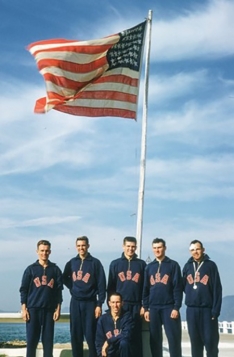
West Point Olympic Coaches
Troy’s story also serves as a break between the “old” and “new” when it comes to the topic of West Point Olympians in general. Prior to 1952, West Pointers won multiple medals in each of the Olympic games in which they competed, 22 in total. Starting in 1952, however, only a single West Pointer won a medal at any one Olympics, but that changes if coaches are included.
From 1952 onward, West Point Olympians have won five Olympic medals. However, that number more than doubles when Olympic coaches with a West Point affiliation are included (even though the Olympic Games do not technically award medals to coaches). Mike Krzyzewski ’69, for example, is associated with five gold medals as a coach for the U.S. Men’s Basketball Team: in 1984, as a Special Assistant; in 1992, as an Assistant Coach; and in 2008, 2012, and 2016, as the Head Coach (hypothetically tying Thompson’s West Point Olympian medal record).
Should coaches be counted, the number of West Point Olympians approximately reaches the century mark, although spotty historical records make exact quantification impossible. Another graduate to serve as Olympic coach is Rick Oleksyk ’85, who coached the U.S. Men’s Handball Team at the 1996 Summer Olympics in Atlanta.
The numbers for West Point Olympians become more impressive if those with long-term ties to the Academy are taken into account. Jack Riley, longtime Army Hockey Team head coach, while not a graduate, is typically considered as a West Point Olympian who coached the 1960 U.S. Hockey Team to a gold medal at the Winter Olympics in Squaw Valley (he also played for the 1948 U.S. Hockey Team at the Winter Olympics in St. Moritz, Switzerland). Long-time Army Gymnastics Team head coach Tom Maloney coached the U.S. Men’s Gymnastics Team in 1952 (Helsinki, Finland) and 1960 (Rome, Italy). Lastly, 13- year Army West Point Men’s and Women’s Swimming and Diving coach Mickey Wender coached American Samoa swimmers at the 2008 Summer Games in Beijing, China.
The Future of West Point Olympians
In July 2019, the Thayer Hotel introduced a two-room suite dedicated to West Point Olympians. Guests in the room are treated to dozens of memorabilia items related to West Point Olympians, including a 2002 Salt Lake City Olympic torch carried (and donated) by Craig T. Gilbert ’78, who competed in Handball at the 1984 Summer Olympics in Los Angeles, and posters from various Olympiads (e.g., 1936-Berlin, 1948- London, and 1960-Rome). The room is also a repository for West Point Olympian trivia, answering, among other things, questions such as “Which West Point Olympian has been in the most Olympic Games?” (Answer: Lyle B. Nelson ’71, who competed in Biathlon in four Winter Olympics: 1976, 1980, 1984, and 1988); “Who was the first female West Point Olympian?” (Answer: Elexa Diana Wills-Orrange ’90, who competed in the Triple Jump at the 1996 Summer Olympics in Atlanta, Georgia. Anita F. Allen ’00, who competed in Modern Pentathlon in the 2004 Athens Games, is the only other female West Point Olympian thus far); and “Which West Olympian won a gold medal in the same event with his brother?” (Answer: Joseph B. Amlong ’61, who won gold with his brother, Tom, in Rowing, Coxed Eights at the 1964 Summer Olympics in Tokyo, Japan).
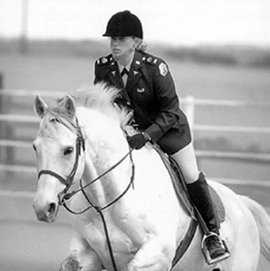
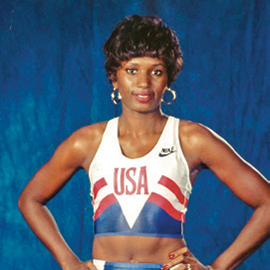
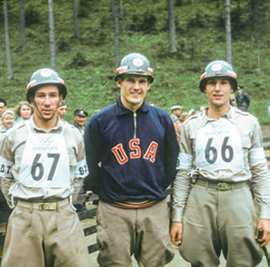
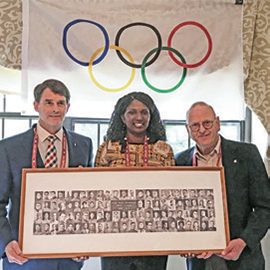
But before the collecting the memorabilia and the trivia, one of the first things that had to be decided for the West Point Olympians Suite was the definition of the term “Olympian” as well as the qualifications needed to be recognized as a “West Pointer.” According to Tom Lough ’64, who competed on the U.S. Modern Pentathlon Team at the 1968 Summer Games in Mexico City, and who conceived and raised the funds to realize the West Point Olympians Suite, the room at the Thayer Hotel follows the inclusive U.S. Olympic/Paralympic Committee (USOPC) definition of the term “Olympian.” The USOPC definition recognizes officially designated alternates in the various sports, while the stricter International Olympic Committee (IOC) definition requires an athlete to have actually stepped onto the field of competition. Similarly, says Lough, “In our Thayer Hotel project, we adopted the term ‘West Point Olympian’ as meaning anyone who had attended the Academy as a cadet and who made an Olympic team according to the USOPC definition, whether they competed or not.” While the room does not include coaches, Lough believes that West Point coaches could help fulfill the tacit mission of the West Point Olympians Suite, which is to inspire cadets to greater athletic excellence. “We hope that coaches at West Point will consider bringing their team to the suite for special occasions,” he says. “Unless they become aware of West Pointers who have become Olympians, cadets might never think of becoming one themselves—maybe some of them might learn of these West Point Olympians and become interested in learning more; maybe some of them might experience Olympic hopes and dreams themselves; and maybe some of them will take action after graduation to qualify for the Olympic trials in their sport.”
Should this be the case, Lough believes that they are at the perfect training ground for any event in the Olympics.“West Point helped me develop character traits that carried me through the challenges and obstacles of my own Olympic journey,” he says. “Things such as self-confidence, the ability to concentrate in the face of disruptions, and a sense of resilience are all lessons I learned at West Point that worked together to bring me athletic success at the 1968 U.S. Olympic Trials.” These are likely lessons that helped Lough’s fellow 1968 West Pointer Mike Silliman ’66 win a team gold medal as a member of the U.S. Men’s Basketball Team.
“West Point helped me develop character traits that carried me through the challenges and obstacles of my own Olympic journey…self-confidence, the ability to concentrate in the face of disruptions, and a sense of resilience are all lessons I learned at West Point that worked together to bring me athletic success at the 1968 U.S. Olympic Trials.”
— Tom Lough ’64
If a cadet or recent graduate discovers that he or she has potential in an Olympic event (as Troy believes, West Point has all the ingredients for Modern Pentathlon events—Fencing Club, Swim Team, Track Team, Pistol Team, and Equestrian Team—and Lough thinks that cadets build strong foundations at West Point in combination events such as triathlon and biathlon), they should investigate the opportunities available through the U.S. Army World Class Athlete Program (WCAP).
This is the path that Dan Browne ’97 took. “I was on the Track Team, and my first fall semester set the stage that ‘You can train here; you can be the best here,” Browne says. “As I continued through the 47-month experience, I learned lessons at West Point that set me up for success in the Olympics, lessons such as resiliency and determination.” By the time he had graduated, Browne had set several indoor and outdoor track records, including being the first cadet to break the four-minute mile. In 1998, Browne found himself in Boulder, Colorado as a member of the World Class Athletes Program (WCAP) training for the 2000 Summer Olympics in Sydney, Australia. Although he won five U.S. national titles as a WCAP athlete, Browne missed making the Sydney U.S. Olympic Team, believing that his timing in terms of peak performance was off. “While I learned a lesson about timing from that experience, I also remembered a lesson that I learned at the Academy,” says Browne: “You don’t quit what you start.” The setback spurred him on to 2004, when he made the U.S. Olympic Team for the Summer Games in Athens, Greece, competing in both the 10,000-Meter and Marathon events. “I am very proud to be counted among the great group of West Point Olympians, and I am thankful for all the resources West Point provided me a cadet, such as the Center for Enhanced Performance, to help me reach my potential,” says Browne, who is still involved with the Olympics, recently coaching the silver medal winner in the 5,000- Meter event at the 2016 Summer Games in Rio de Janeiro, Brazil.
MacArthur as Olympian
For many of the living West Point Olympians, such as Troy, Lough, and Browne, there is untapped potential for future Olympians among the Corps. “Every cadet an athlete,” right? Interestingly, the author of that passage, Douglas MacArthur, could be considered the most decorated West Point Olympian ever, both in terms of general stars and Olympic medals.
“On the fields of friendly strife are sown the seeds that on other days, on other fields, will bear the fruits of victory.”
—GEN Douglas MacArthur, Class of 1903
In 1927, when William C. Prout, then president of the American Olympic Association (AOA) died suddenly on August 4, MacArthur, thanks to the sweeping athletic changes he instituted at the Academy during his tour as Superintendent, immediately was considered as a possible candidate to become the next AOA president. He took on the role in October 1927, realizing that he would have less than a year to prepare for the Summer Olympics in Amsterdam. Multiple reports suggest that he approached his duties as AOA president in the same manner that he approached combat. He attended every practice he could. He often met with athletes to motivate them to a higher level of performance. He gave legendary speeches to the 1928 U.S. Olympic Team, famously saying, “We have not come 3,000 miles just to lose gracefully— We are here to win and win decisively.” According to Arthur Herman, author of Douglas MacArthur: American Warrior, “By the time the games were over, the United States had won 24 gold medals, more than the next two countries, Finland and Germany, put together, [and] the U.S. team had set no less than 17 Olympic records and seven world records.” All in all, U.S. athletes took home 56 total medals from the 1928 Amsterdam Games, nine more than the next two nations combined. His effort as AOA president has led historians to dub MacArthur as “the father of the modern American Olympic spirit.”
Through “Every Cadet an Athlete,” which is still in play at West Point, current West Point Olympians hope that some of MacArthur’s spirit passes on to a new generation of cadets at the Academy so that one of the Long Gray Line’s most impressive legacies will continue long into the future.
The author would like to thank Craig Gilbert ’78 and his wife, Gretchen Braunschweiger, for their invaluable assistance with this article.

